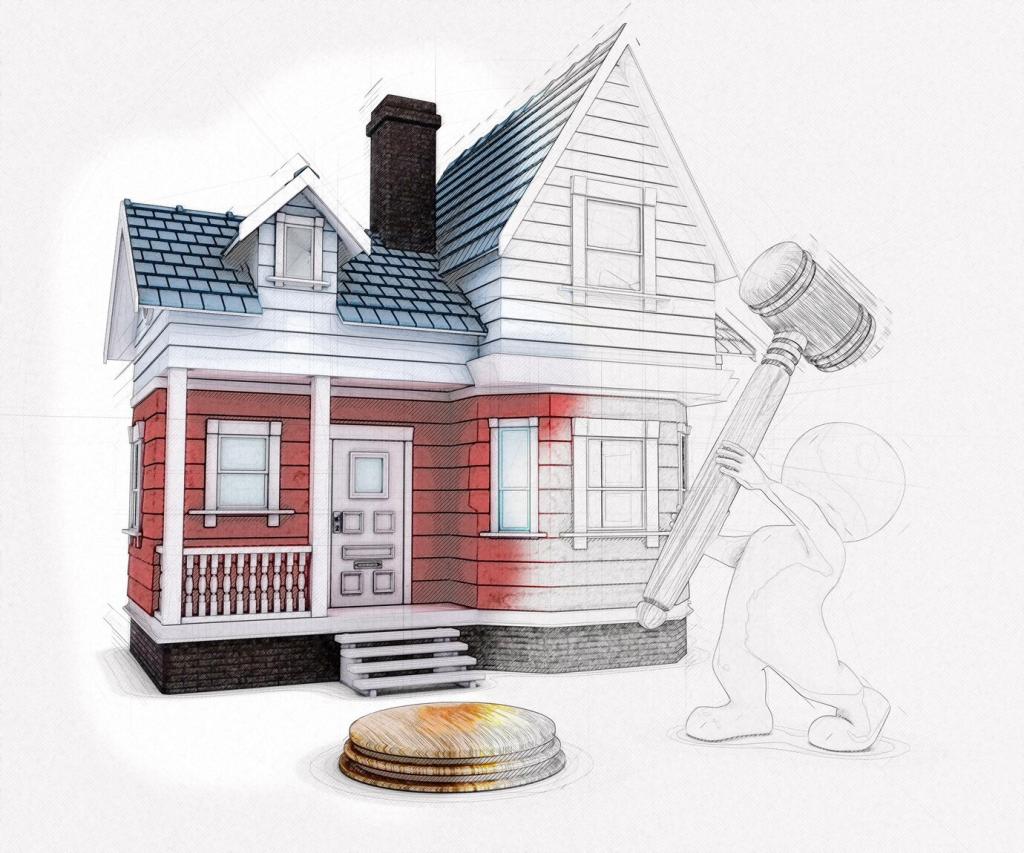
Energy Efficiency and Smart Home Innovations
Discover how energy efficiency and the latest smart home innovations are transforming everyday living. As the world becomes increasingly conscious of its energy consumption and its impacts on the environment, new technologies are emerging to make our homes not only more efficient but also smarter and more responsive to our needs. This web page explores the pivotal developments in energy management, the role of smart devices, integration with renewable energy, and future trends shaping the way homeowners approach sustainability and convenience.
Previous
Next
The Foundations of Energy Efficiency in Modern Homes
The building envelope—the walls, windows, doors, and insulation—plays a crucial role in determining a home’s energy performance. Recent innovations focus on advanced materials and design techniques that significantly reduce heat loss in winter and heat gain in summer. High-performance insulation, triple-glazed windows, and airtight construction are just a few examples of upgrades that maintain stable indoor temperatures with less reliance on heating and cooling systems. As a result, homeowners experience greater comfort and consistent energy savings throughout each season, underscoring the importance of a well-designed building envelope in the pursuit of energy efficiency.

Centralized home management platforms serve as the digital command centers of the smart home, enabling seamless interaction with various connected devices. These platforms consolidate controls for lighting, climate, security, and appliances into a single, user-friendly interface accessible via smartphones, tablets, or voice commands. By providing comprehensive oversight, they allow users to program schedules, receive real-time alerts, and track energy consumption. This level of integrated control not only enhances convenience but also makes it easier to identify inefficiencies and enact changes that lead to meaningful energy savings.

Smart sensors have revolutionized the way lighting and environmental conditions are managed in today’s homes. Occupancy sensors, daylight harvesters, and adaptive brightness controls ensure that lights are only on when needed and automatically adjust to optimal levels throughout the day. These sophisticated systems take human behavior and natural light availability into account, minimizing unnecessary energy use by switching off or dimming lights in unoccupied areas. Through precise and responsive illumination, smart sensors personalize comfort while fostering significant long-term reductions in household electricity consumption.

Modern smart homes integrate security, comfort, and energy management to work in harmony rather than as separate functions. Intelligent door locks, cameras, and alarm systems can coordinate with lighting and climate controls to simulate occupancy, enhance safety, and conserve resources. For example, a home’s security system can trigger energy-saving modes when the residents are away, automatically adjusting thermostats and turning off non-essential appliances. This synergy improves not just the safety and comfort of occupants but also ensures that energy efficiency is achieved without sacrificing peace of mind or personal convenience.
Residential Solar Power Systems
Residential solar power systems are a hallmark of renewable energy adoption in the modern home. Advances in photovoltaic panel technology, storage batteries, and installation methods have made solar solutions more accessible, affordable, and efficient than ever before. These systems convert sunlight directly into electricity, powering household needs and often generating surplus energy that can be fed back into the grid. With the right setup and incentives, homeowners can substantially lower utility bills, reduce carbon emissions, and contribute to a more sustainable future while maintaining uninterrupted access to reliable power.
Smart Energy Storage Solutions
Smart energy storage solutions, such as home batteries, are critical components for maximizing the benefits of onsite renewable energy. These systems store excess electricity generated during peak production periods for use during cloudy days or nighttime hours, ensuring a consistent and dependable power supply. Modern energy storage technologies feature advanced controls that automatically manage charging and discharging cycles, integrate with home energy management platforms, and optimize usage based on real-time consumption patterns. Homeowners gain greater resilience during outages and can participate in demand response programs, enhancing both individual energy security and overall grid stability.
Dynamic Energy Management and Grid Interaction
Dynamic energy management empowers homes to intelligently balance their internal energy production, storage, and consumption with the wider grid. Smart home systems communicate with utility providers to respond to demand fluctuations, participate in time-of-use pricing, and adjust energy usage accordingly. By synchronizing renewable generation and battery storage with grid needs, homeowners can minimize costs, avoid peak pricing, and even monetize excess electricity production. This capability enhances the overall reliability of the power system while contributing to a more flexible, low-carbon energy future.
